Historic Legends of the World
Beings in myths are generally gods and goddesses, heroes and heroines, or animals and plants. Most myths are set in a timeless past before recorded time or beginning of the critical history.
Apollo
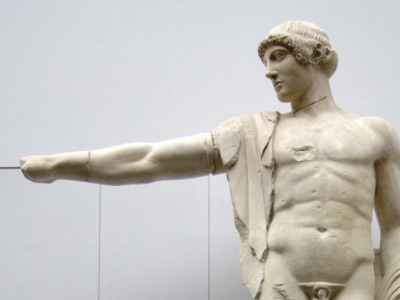
Apollo is one of the most important and complex of the Olympian deities in classical Greek and Roman religion and Greek and Roman mythology. The ideal of the kouros (a beardless, athletic youth), Apollo has been variously recognized as a god of music, truth and prophecy, healing, the sun and light, plague, poetry, and more. View Historical Legend »
Bakeneko (化け猫 changed cat)
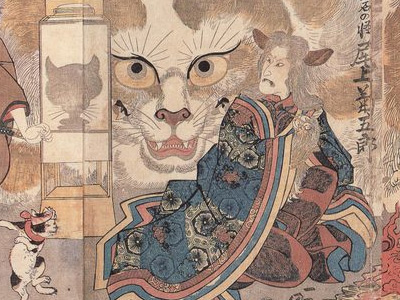
Bakeneko according to its name, it is a cat that has changed into a yōkai. It is often confused with the nekomata, another cat-like yōkai, and the distinction between the two can often be quite ambiguous. There are legends of bakeneko in various parts of Japan, but the tale of the Nabeshima Bakeneko Disturbance in Saga Prefecture is especially famous. View Historical Legend »
Chiron
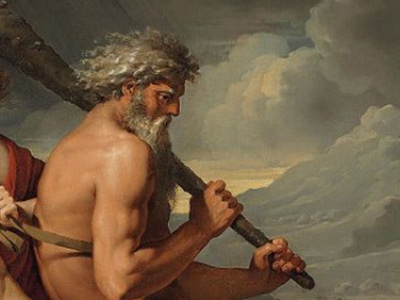
Chiron was held to be the superlative centaur amongst his brethren, as he was called as the "wisest and justest of all the centaurs". Chiron, by contrast, was intelligent, civilized and kind, because he was not related directly to the other centaurs due to his parentage. View Historical Legend »
Cronus
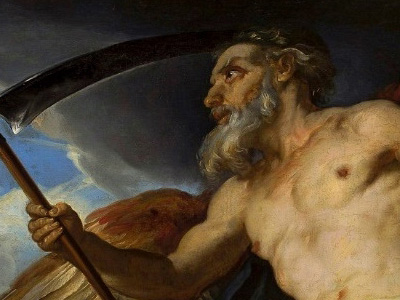
Cronus was the leader and youngest of the first generation of Titans, the divine descendants of Uranus, the sky, and Gaia, the earth. He overthrew his father and ruled during the mythological Golden Age, until he was overthrown by his own son Zeus and imprisoned in Tartarus. View Historical Legend »
Cyclops
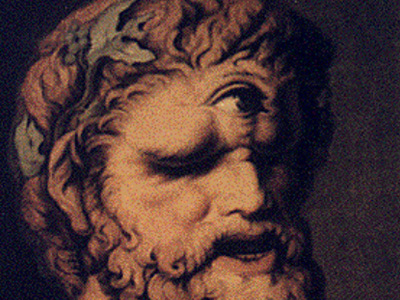
Cyclops in Greek mythology and later Roman mythology, is a member of a primordial race of giants, each with a single eye in the center of his forehead. The word "cyclops" literally means "round-eyed" or "circle-eyed". View Historical Legend »
Gaia
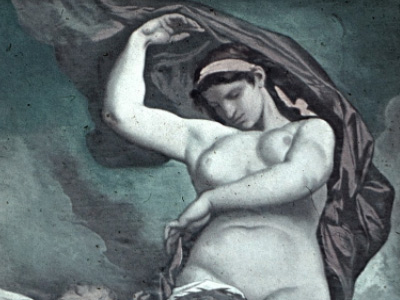
Gaia also spelled Gaea, is the personification of the Earth and one of the Greek primordial deities. Gaia is the ancestral mother of all life: the primal Mother Earth goddess. She is the immediate parent of Uranus (the sky), from whose sexual union she bore the Titans (themselves parents of many of the Olympian gods) and the Giants. View Historical Legend »
Gashadokuro (がしゃどくろ)
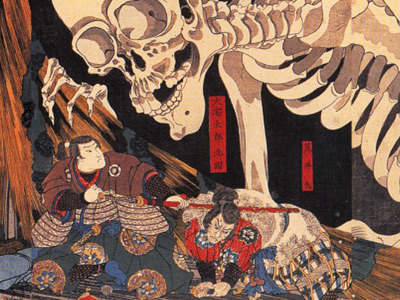
The Gashadokuro are giant skeletons that are fifteen times taller than an average person, said to be created from the amassed bones of people who died of starvation. These Yōkai roam after midnight, grabbing lone travelers and biting off their heads to drink their spraying blood. There is a tell sign as the victim would hear the sound of loud ringing in the ear. View Historical Legend »
Hades
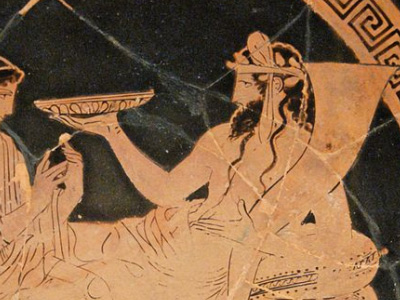
Hades was the ancient Greek chthonic god of the underworld. He and his brothers Zeus and Poseidon defeated their father's generation of gods, the Titans, and claimed rulership over the cosmos. Hades received the underworld, Zeus the sky, and Poseidon the sea. Hades was often portrayed with his three-headed guard dog Cerberus. View Historical Legend »
Helios
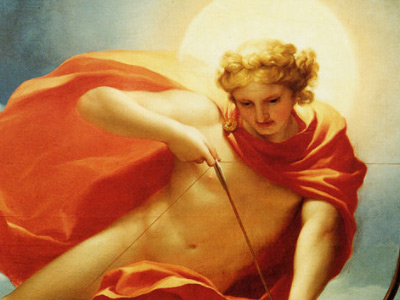
Helios was described as a handsome titan crowned with the shining aureole of the Sun, who drove the chariot of the sun across the sky each day to earth-circling Oceanus and through the world-ocean returned to the East at night. Helios was the personification of the Sun in Greek mythology. View Historical Legend »
Heracles
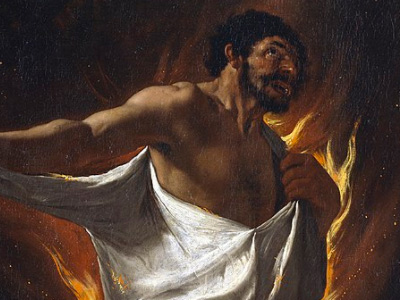
Heracles was a divine hero in Greek mythology, the son of Zeus and Alcmene, foster son of Amphitryon and great-grandson and half-brother of Perseus. He was the greatest of the Greek heroes, a paragon of masculinity, the ancestor of royal clans who claimed to be Heracleidae, and a champion of the Olympian order against chthonic monsters. View Historical Legend »
King Arthur
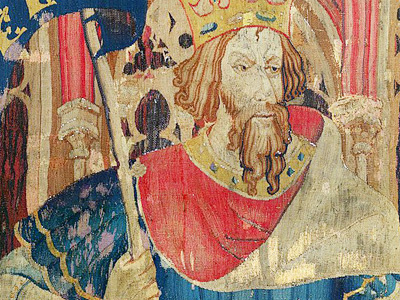
King Arthur is a legendary British leader who, according to medieval histories and romances, led the defence of Britain against Saxon invaders in the late 5th and early 6th centuries AD. The details of Arthur's story are mainly composed of folklore and literary invention, and his historical existence is debated and disputed by modern historians. View Historical Legend »
Kintarō (金太郎)
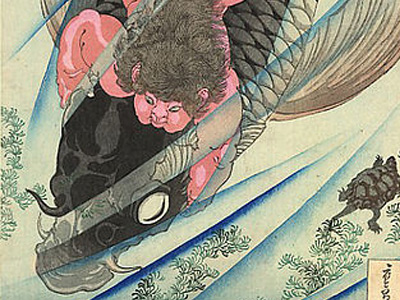
Kintarō is a folk hero from Japanese folklore. A child of superhuman strength, he was raised by a mountain hag on Mount Ashigara. He became friendly with the animals of the mountain, and later, after catching Shutendouji, the terror of the region around Mount Ooe, he became a loyal follower of Minamoto no Yorimitsu. View Historical Legend »
Kitsune (キツネ)
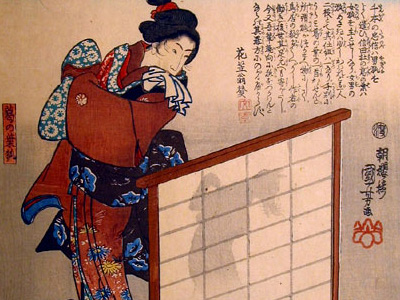
Kitsune is the Japanese word for fox. Foxes are a common subject of Japanese folklore. Stories depict them as intelligent beings and as possessing magical abilities that increase with their age and wisdom. According to Yōkai folklore, all foxes have the ability to shape shift into men or women. View Historical Legend »
Nue (鵺, 鵼, 恠鳥, or 奴延鳥)
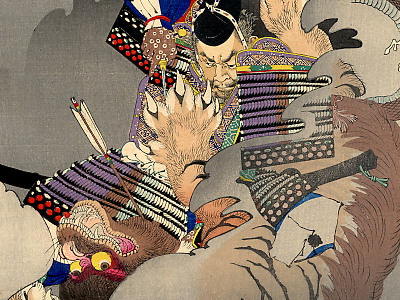
Is a legendary Japanese yōkai or mononoke. Appearing in the Heike Monogatari, it has the face of a monkey, the legs of a tiger , the body of a Japanese Raccoon Dog and the front half of a snake for a tail. According to which writing it is, sometimes nothing is stated about its torso, or is sometimes depicted to have the torso of a tiger. View Historical Legend »
Oni (鬼)
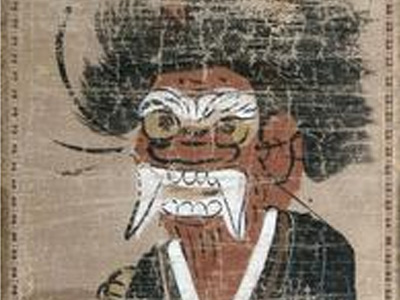
Oni are a kind of yōkai from Japanese folklore, variously translated as demons, devils, ogres or trolls. They are popular characters in Japanese art, literature and theatre. Depictions of oni vary widely but usually portray them as hideous, gigantic ogre-like creatures with sharp claws, wild hair, and two long horns growing from their heads. View Historical Legend »
Perseus
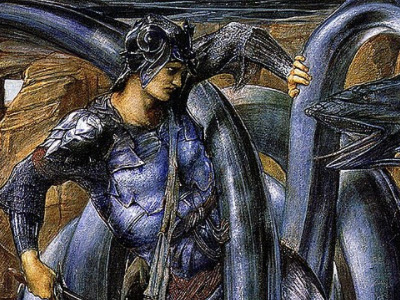
Perseus the legendary founder of Mycenae and of the Perseid dynasty of Danaans, was, alongside Cadmus and Bellerophon, the greatest Greek hero and slayer of monsters before the days of Heracles. He beheaded the Gorgon Medusa for Polydectes and saved Andromeda from the sea monster Cetus. View Historical Legend »
Poseidon
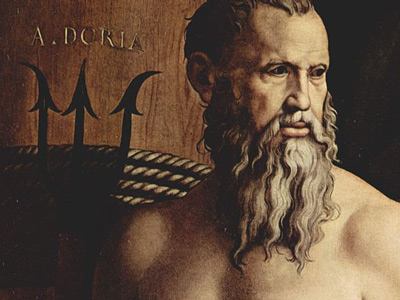
Poseidon was one of the Twelve Olympians in ancient Greek religion and myth. He was god of the Sea and other waters; of earthquakes; and of horses. In pre-Olympian Bronze Age Greece, he was venerated as a chief deity at Pylos and Thebes. View Historical Legend »
Prometheus
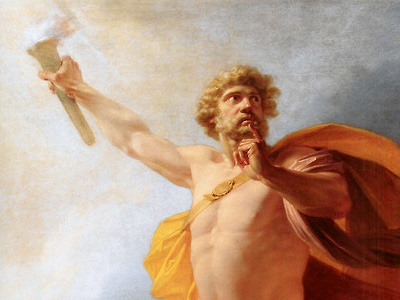
Prometheus is a Titan in Greek mythology, best known as the deity in Greek mythology who was the creator of mankind and its greatest benefactor, who stole fire from Mount Olympus and gave it to mankind. View Historical Legend »
Tsuchigumo (土蜘蛛)
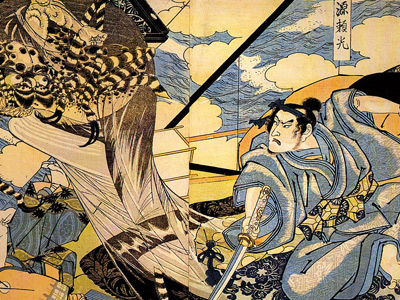
Literally translated dirt/earth spider, is a historical Japanese derogatory term for renegade local clans, and also the name for a race of spider-like yōkai in Japanese folklore. View Historical Legend »
Uranus
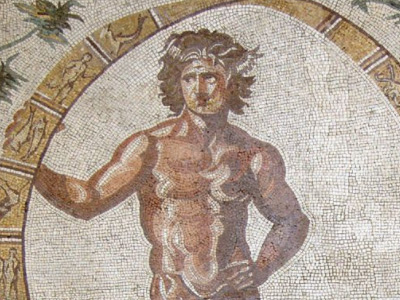
Uranus was the primal Greek god personifying the sky. Uranus and Gaia were the parents of the first generation of Titans, and the ancestors of most of the Greek gods, but no cult addressed directly to Uranus survived into Classical times, and Uranus does not appear among the usual themes of Greek painted pottery. View Historical Legend »
Vampire
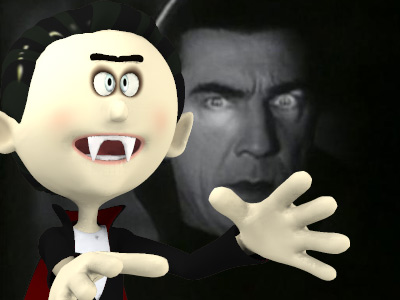
A vampire is a being from folklore who subsists by feeding on the life essence (generally in the form of blood) of living creatures. Undead beings, vampires often visited loved ones and caused mischief or deaths in the neighbourhoods they inhabited when they were alive. View Historical Legend »
Yamata no Orochi (八岐の大蛇)
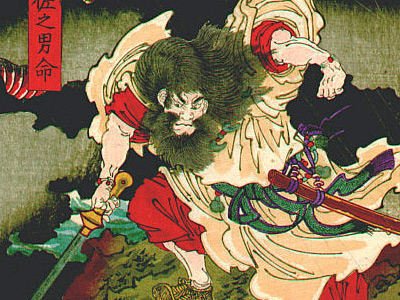
Yamata no Orochi or Orochi, translated as the Eight-Forked Serpent in English, is a legendary 8-headed and 8-tailed Japanese dragon that was slain by the Shinto storm-god Susanoo. The legendary sword Kusanagi-no-Tsurugi ,which came from the tail of Yamata no Orochi, along with the Yata no Kagami mirror and Yasakani no Magatama jewel or orb, are the three sacred Imperial Regalia of Japan. View Historical Legend »
Yotsuya Kaidan (四谷怪談)
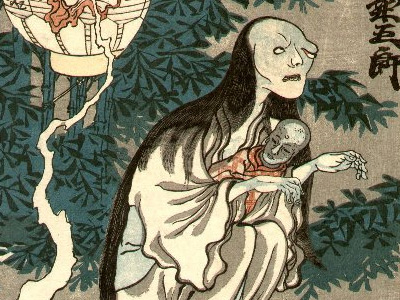
Yotsuya Kaidan is the story of Oiwa and Tamiya Iemon, is a tale of betrayal, murder and ghostly revenge. Arguably the most famous Japanese ghost story of all time, it has been adapted for film over 30 times, and continues to be an influence on Japanese horror today. It is now generally shortened, and loosely translates as Ghost Story of Yotsuya. View Historical Legend »
Yuki-onna (雪女, snow woman)
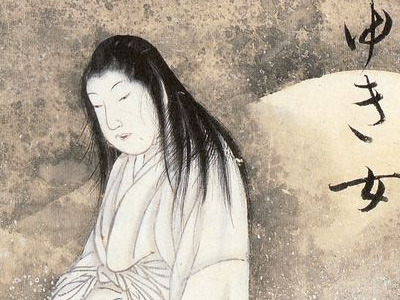
Yuki-onna is a spirit or yōkai in Japanese folklore. She is a popular figure in Japanese literature, manga, film , and animation. She may also go by such names as yuki-musume "snow girl", yuki-onago "snow wench", yukijorō "snow harlot", yuki anesa"snow sis'", yuki-omba "snow granny or snow nanny", yukinba "snow hag" (Ehime), yukifuri-baba "snowfall hag". View Historical Legend »
Zeus
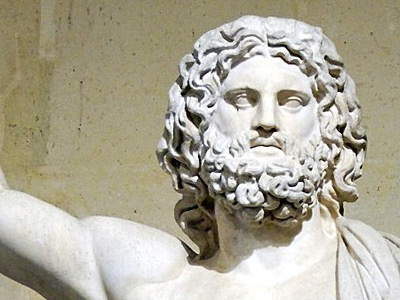
Zeus is the sky and thunder god in ancient Greek religion, who ruled as king of the gods of Mount Olympus. His name is cognate with the first element of his Roman equivalent Jupiter. His mythologies and powers are similar, though not identical, to those of Indo-European deities such as Indra, Jupiter, Perun, Thor, and Odin. View Historical Legend »

RESOURCES
This article uses material from the Wikipedia articles "Short story", "Vampire", "King Arthur", "Zeus", "Cyclops", "Cronus", "Gaia (mythology)", "Chiron", "Perseus", "Poseidon", "Hades", "Heracles", "Prometheus", "Uranus (mythology)", "Helios", "Apollo", "Kintarō (金太郎)", "Yamata no Orochi (八岐の大蛇)", "Bakeneko (化け猫 changed cat)", "Gashadokuro", "Nue", "Oni (鬼)", "Tsuchigumo (土蜘蛛)", "Yuki-onna (雪女, snow woman)", "Yotsuya Kaidan (四谷怪談)", "Kitsune (狐, キツネ)", which is released under the Creative Commons Attribution-Share-Alike License 3.0.
© Stories Preschool. All Rights Reserved.
"Building Cool Educational Stuff for children and adults!"


Historic Battles
Wars and military campaigns are guided by strategy, whereas battles take place on a level of planning and execution known as operational mobility.
View Historic Battles »


Historic People
A historical figure is a famous person in history, such as Alexander the Great, Admiral Yi Sun-Shin, Abraham Lincoln, George Washington, Christopher Columbus, or Napoleon Bonaparte.
View Historic People »


Historic Timeline
Describes the history of humanity as determined by the study of archaeological and written records. Ancient recorded history begins with the invention of writing.
View Historic Timeline »

Historic Legends
Beings in myths are generally gods and goddesses, heroes and heroines, or animals and plants. Most myths are set in a timeless past before recorded time or beginning of the critical history.
View Historic Legends »

Sports World
Includes competitive games which, through casual or organized participation, aim to use, maintain or improve physical ability and skills while providing enjoyment to participants.
View Sports World »

Untold Stories
If you have any questions, feedback or suggestions for us, we'd like to hear from you. Please feel free to contact us!
Contact Us

Historic Battles
Wars and military campaigns are guided by strategy, whereas battles take place on a level of planning and execution known as operational mobility.
View Historic Battles »

Historic People
A historical figure is a famous person in history, such as Alexander the Great, Admiral Yi Sun-Shin, Abraham Lincoln, George Washington, Christopher Columbus, or Napoleon Bonaparte.
View Historic People »

Historic Timeline
Describes the history of humanity as determined by the study of archaeological and written records. Ancient recorded history begins with the invention of writing.
View Historic Timeline »

Historic Legends
Beings in myths are generally gods and goddesses, heroes and heroines, or animals and plants. Most myths are set in a timeless past before recorded time or beginning of the critical history.
View Historic Legends »

Sports World
Includes competitive games which, through casual or organized participation, aim to use, maintain or improve physical ability and skills while providing enjoyment to participants.
View Sports World »

Untold Stories
If you have any questions, feedback or suggestions for us, we'd like to hear from you. Please feel free to contact us!
Contact Us
Historic Battles
Wars and military campaigns are guided by strategy, whereas battles take place on a level of planning and execution known as operational mobility.
View Historic Battles »

Historic People
A historical figure is a famous person in history, such as Alexander the Great, Admiral Yi Sun-Shin, Abraham Lincoln, George Washington, Christopher Columbus, or Napoleon Bonaparte.
View Historic People »

Historic Timeline
Describes the history of humanity as determined by the study of archaeological and written records. Ancient recorded history begins with the invention of writing.
View Historic Timeline »

Historic Legends
Beings in myths are generally gods and goddesses, heroes and heroines, or animals and plants. Most myths are set in a timeless past before recorded time or beginning of the critical history.
View Historic Legends »

Sports World
Includes competitive games which, through casual or organized participation, aim to use, maintain or improve physical ability and skills while providing enjoyment to participants.
View Sports World »

Untold Stories
If you have any questions, feedback or suggestions for us, we'd like to hear from you. Please feel free to contact us!
Contact Us